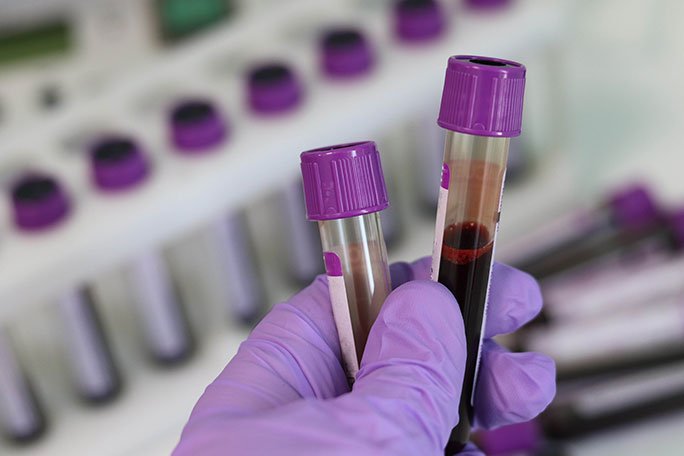Hospital Supply and Equipment Management Practices for Effective Public Health Initiatives in the United States
Summary
- Hospital supply and equipment management practices play a crucial role in ensuring effective public health initiatives within the United States.
- Efficient management of supplies and equipment helps in providing timely and quality healthcare services to patients.
- Utilizing the best practices in Supply Chain and equipment management can lead to cost savings and improved patient outcomes.
Introduction
Hospital supply and equipment management are essential components of healthcare delivery systems, especially in the United States. Effective management of supplies and equipment in hospitals not only ensures seamless operations but also plays a critical role in supporting public health initiatives. This article explores the impact of hospital supply and equipment management practices on ensuring effective public health initiatives within the United States.
Challenges in Hospital Supply and Equipment Management
Managing hospital supplies and equipment comes with several challenges that can impact the delivery of healthcare services and public health initiatives. Some of the common challenges include:
- Inventory management: Hospitals need to keep track of a large number of supplies and equipment, which can lead to errors and inefficiencies.
- Supply Chain disruptions: Disruptions in the Supply Chain can result in delays in receiving critical supplies and equipment, affecting patient care.
- Cost Management: The rising cost of healthcare supplies and equipment can strain hospital budgets, impacting their ability to invest in public health initiatives.
- Maintaining compliance: Hospitals need to comply with various Regulations and standards in managing supplies and equipment, which can be a complex task.
Impact on Patient Care
Effective hospital supply and equipment management practices have a direct impact on patient care and the overall quality of healthcare services provided. Some of the ways in which these practices influence patient care include:
- Timely access to supplies: Proper management ensures that hospitals have the necessary supplies and equipment available when needed, reducing the risk of treatment delays.
- Optimal resource utilization: Efficient management helps in avoiding wastage and optimizing the use of resources, leading to cost savings and better patient outcomes.
- Quality of care: The availability of high-quality supplies and equipment enhances the quality of care provided to patients, improving their overall healthcare experience.
Cost Savings and Efficiency
Implementing best practices in hospital supply and equipment management can result in cost savings and increased efficiency, benefiting both hospitals and public health initiatives. Some of the ways in which hospitals can achieve cost savings and improve efficiency include:
- Centralized procurement: Centralizing the procurement process can help in standardizing purchasing practices, negotiating better prices, and reducing administrative costs.
- Inventory optimization: Implementing inventory optimization strategies can help in reducing excess inventory, minimizing stockouts, and improving cash flow.
- Supplier relationships: Building strong relationships with suppliers can lead to discounts, better quality products, and timely deliveries, contributing to cost savings.
Enhancing Public Health Initiatives
Hospital supply and equipment management practices play a significant role in supporting public health initiatives within the United States. By ensuring efficient management of supplies and equipment, hospitals can contribute to the success of various public health programs, including vaccination campaigns, disease prevention efforts, and emergency preparedness. Some of the ways in which hospitals can enhance public health initiatives through effective supply and equipment management include:
- Rapid response capabilities: Having well-managed supplies and equipment enables hospitals to respond quickly to public health emergencies and disasters, ensuring that critical resources are available when needed.
- Data-driven decision-making: Utilizing data analytics and technology in Supply Chain management can help hospitals in making informed decisions, improving resource allocation, and enhancing public health outcomes.
- Collaboration and coordination: Establishing collaborative partnerships with other healthcare organizations, government agencies, and community stakeholders can promote effective coordination in managing supplies and equipment for public health initiatives.
Conclusion
In conclusion, hospital supply and equipment management practices have a significant impact on ensuring effective public health initiatives within the United States. By adopting best practices in Supply Chain and equipment management, hospitals can improve patient care, achieve cost savings, and enhance public health outcomes. It is essential for healthcare organizations to prioritize efficient management of supplies and equipment to support public health initiatives and contribute to the well-being of the population.

Disclaimer: The content provided on this blog is for informational purposes only, reflecting the personal opinions and insights of the author(s) on the topics. The information provided should not be used for diagnosing or treating a health problem or disease, and those seeking personal medical advice should consult with a licensed physician. Always seek the advice of your doctor or other qualified health provider regarding a medical condition. Never disregard professional medical advice or delay in seeking it because of something you have read on this website. If you think you may have a medical emergency, call 911 or go to the nearest emergency room immediately. No physician-patient relationship is created by this web site or its use. No contributors to this web site make any representations, express or implied, with respect to the information provided herein or to its use. While we strive to share accurate and up-to-date information, we cannot guarantee the completeness, reliability, or accuracy of the content. The blog may also include links to external websites and resources for the convenience of our readers. Please note that linking to other sites does not imply endorsement of their content, practices, or services by us. Readers should use their discretion and judgment while exploring any external links and resources mentioned on this blog.
